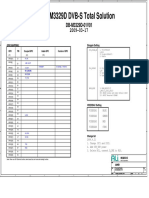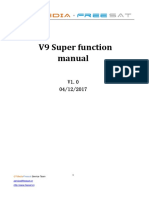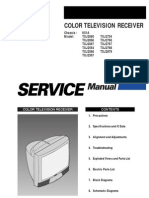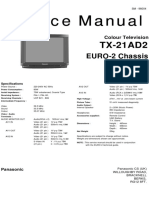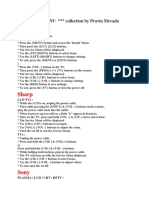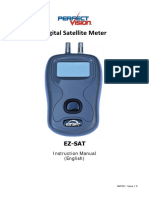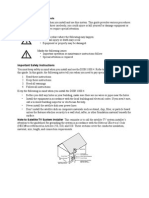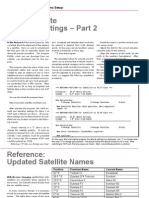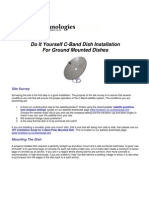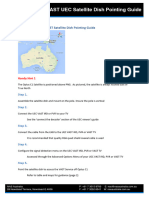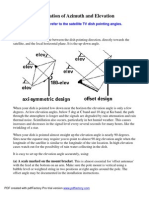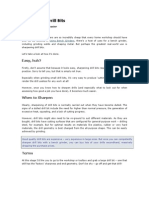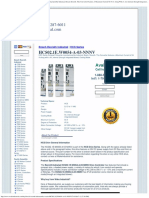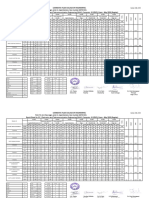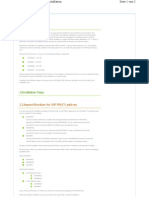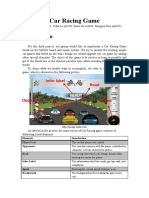100% found this document useful (1 vote)
762 views6 pagesDIY Satellite Dish Installation
This document provides instructions for installing and pointing a satellite dish to receive television signals from multiple satellites. It outlines the tools needed, how to mount and connect the dish to a decoder, and how to use azimuth, elevation, and polarization values to point the dish at the desired satellite based on one's geographic location. The instructions are illustrated with an example of pointing a dish in Madrid, Spain to receive signals from the Astra satellite. Fine adjustments should then be made using the receiver's signal strength indicator to optimize reception.
Uploaded by
aabb_1my3724Copyright
© © All Rights Reserved
We take content rights seriously. If you suspect this is your content, claim it here.
Available Formats
Download as DOCX, PDF, TXT or read online on Scribd
100% found this document useful (1 vote)
762 views6 pagesDIY Satellite Dish Installation
This document provides instructions for installing and pointing a satellite dish to receive television signals from multiple satellites. It outlines the tools needed, how to mount and connect the dish to a decoder, and how to use azimuth, elevation, and polarization values to point the dish at the desired satellite based on one's geographic location. The instructions are illustrated with an example of pointing a dish in Madrid, Spain to receive signals from the Astra satellite. Fine adjustments should then be made using the receiver's signal strength indicator to optimize reception.
Uploaded by
aabb_1my3724Copyright
© © All Rights Reserved
We take content rights seriously. If you suspect this is your content, claim it here.
Available Formats
Download as DOCX, PDF, TXT or read online on Scribd
/ 6











